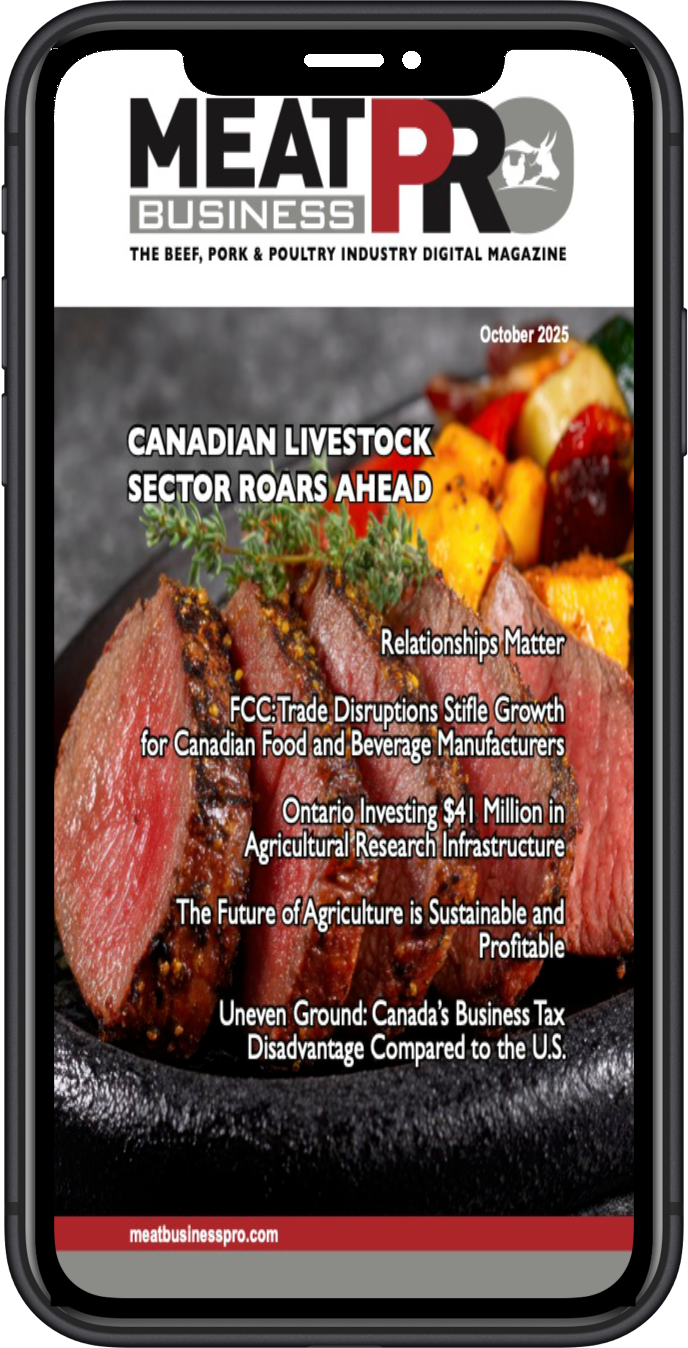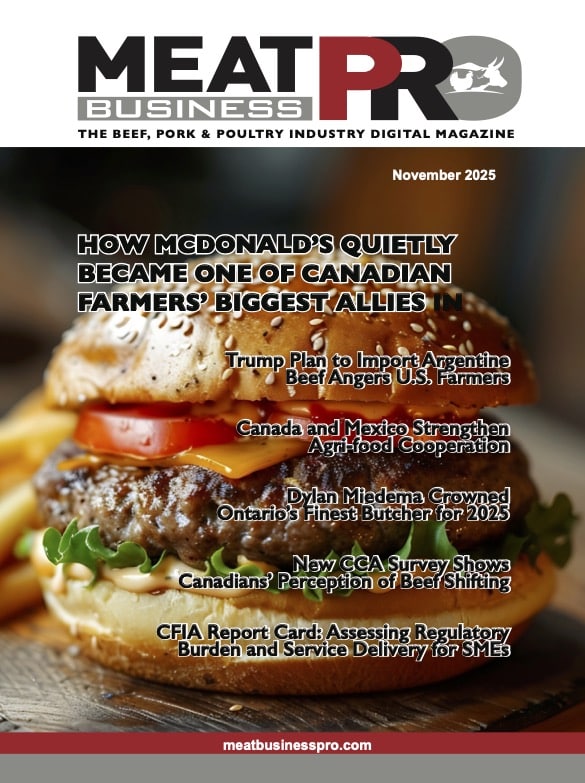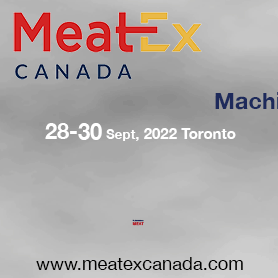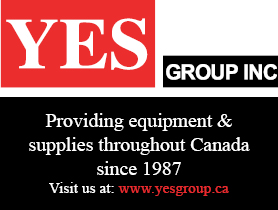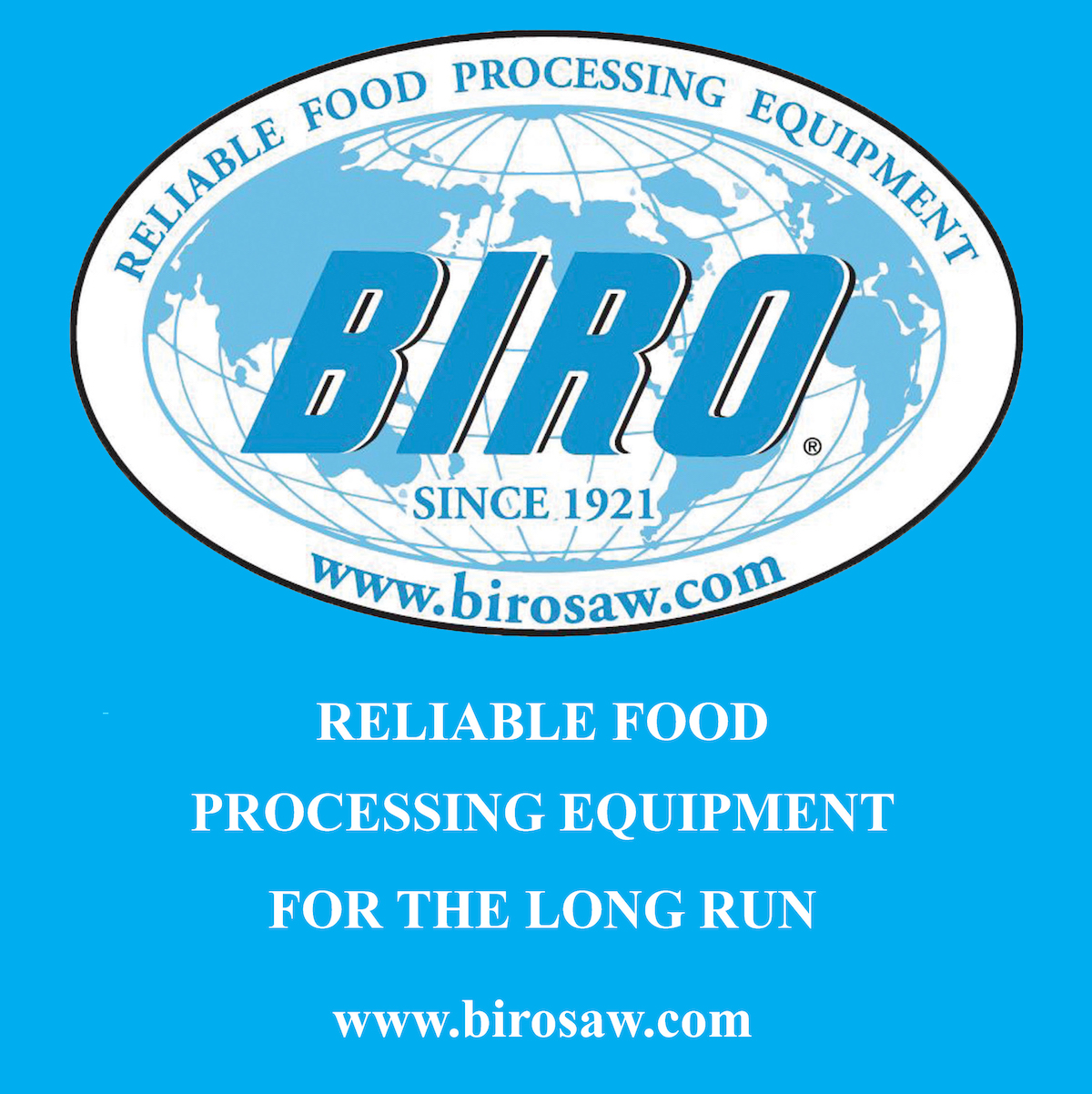Canadian Dairies Embrace the Value of Silage Bagging
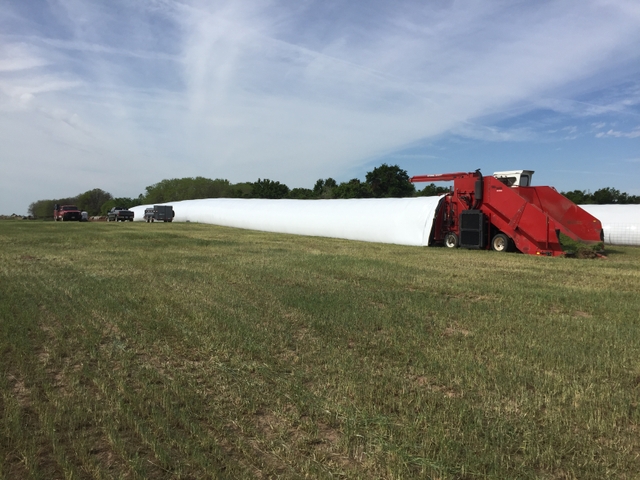
Canadian dairy farms face several silage-related challenges that are uniquely shaped by national climate, regulatory, and logistical factors not commonly seen in the United States
In much of Canada, the growing season is significantly shorter than in many parts of the U.S. This limits the types of forage crops that can be reliably grown and harvested for silage.
While many U.S. dairies rely heavily on corn silage, Canadian dairies often depend on legume-grass silage mixes, barley silage, or triticale that are better suited to cooler climates and earlier cuts. As a result, dairy producers can experience greater variability in feed quality from year to year.
So, for many dairy farms – particularly those in colder or remote regions – bagging their silage is a strategic tool for ensuring feed security and maintaining optimum milk production throughout the year.
Bagged silage extends the harvesting window and improves forage preservation in provinces with brief harvest periods or unreliable fall weather. Since crops can be harvested and ensiled more quickly with minimal infrastructure with baggers, Canadian farmers can also act immediately during narrow weather windows, reducing losses from frost or rain damage.
Optimizing Silage for Dairy Performance
As a home-grown food source, silage is a cost-effective and sustainable way to provide dairy cattle with many of the nutrients and calories they need to stay healthy and productive. Dairy cows, particularly those in peak lactation, have very high energy demands. A high-producing dairy cow can require up to 70% of her energy intake just for milk production.
In this context, silage provides a high-moisture, energy-rich forage source that supports rumen function and milk production in dairy cows. To support optimal milk production and overall animal health, dry grains are often mixed with silage, hay, and other feed ingredients in a Total Mixed Ration (TMR) to ensure a balanced intake of energy, protein, and fiber.
Proper storage methods play a critical role in preserving silage quality. The approach used not only affects shelf life and nutritional retention but also determines how consistently high-quality feed can be made available throughout the year. Compared to traditional systems such as bunkers, pits, or upright silos, properly bagged silage offers key advantages—especially in minimizing spoilage, maintaining nutritional value, and improving operational flexibility.
Vyefield Farms LTD., operated by the Kielstra family, is located in Abbotsford, B.C. The farm supports a herd of approximately 360 milking cows and has adopted silage bagging as a central component of its feed strategy.
The dairy operation relies primarily on fescue-based silage, which provides the fiber, energy, and nutrients essential for milk production and herd health. Other cool-season grasses—such as ryegrass, orchard grass, timothy, and bromegrass—are also well-suited for silage due to their nutritional value and fermentation characteristics.
According to Ed Kielstra, of Vyefield Farms, the growing season begins with the first cut of grass in early May and typically extends through October. During this period, the farm takes up to four substantial cuts of grass, sometimes followed by a lighter fifth cut, depending on conditions.
Vyefield stores grass and corn in sealed bags, allowing both to ferment into high-quality silage. This approach supports a consistent, year-round feed supply. When incorporated into their TMR, the silage is combined with grains and, at times, hay to deliver a nutritionally balanced diet that promotes optimal milk production and maintains herd health.
Kielstra says many dairy producers utilize traditional storage methods such as bunkers, pits, piles, concrete pads, or silos. However, this can lead to considerable risk of spoilage and loss, which can amount to as much as 30% by some estimates.
The problem with conventional silage storage methods is excessive exposure to oxygen, which leads to rapid silage deterioration. Standard practice is to leave the “face” of the pile, pit or bunker open for feeding. This leaves hundreds of square feet exposed and deteriorating before it can be fed.
“The central portion of the pile can be well-preserved under plastic covering, but wall-side exposure remains problematic,” explains Kielstra. “In some cases, the spoilage forms a wedge that penetrates as deep as four feet. This kind of loss is a consistent issue with bunker systems and is difficult to prevent.”
With silage bagging, the oxygen is removed almost instantly, and fermentation begins promptly. The sealed bags protect silage quality and maintain favorable fermentation conditions even amid unfavorable conditions such as exposure to rain, moisture, excessive dryness, or prolonged storage.
“We don’t like to put grass in a bunker ever. We always want it to be bagged,” says Kielstra.
He initially purchased several smaller baggers, but those proved unreliable and underperformed in their operation. Later, he transitioned to a bagger from Astoria, OR-based Versa Corporation, a global leader in agricultural silage bagging and handling.
According to Kielstra, they have been using a Versa bagger for over 20 years and it has delivered consistent results. “It’s one of the larger units with a 12-foot bag diameter, and it continues to operate effectively for our needs,” he says.
The airtight environment created within the Versa produced bag limits oxygen exposure, which enhances fermentation and reduces spoilage risk. This is particularly beneficial for Canadian farms using barley or triticale, which can be more challenging to ferment uniformly in bunkers. Improved anaerobic conditions promote consistent lactic acid production, stabilizing the pH and protecting feed value throughout long winters.
When properly stored, silage maintains higher nutrient density, particularly in terms of energy, protein, and digestibility, all of which contribute to better overall cow health and fertility.
Flexible Storage for Remote Regions
For remote or northern operations where constructing concrete bunkers or drive-over piles is either cost-prohibitive or logistically unfeasible, silage bagging offers a practical, scalable alternative. This system enables flexible storage in multiple locations, including leased land and smaller, fragmented fields, streamlining feed logistics and minimizing the need for long-distance transport in areas with limited infrastructure.
“Bagging is the most economic way to store high-quality forage,” says René Dutil, the founder of Ferme Marygold, a family-run dairy farm in Saint‑Anselme, Quebec, Canada.
Dutil emphasizes that harvesting and storing high-quality forage is the most critical factor in controlling milk production costs. Feed typically represents over half of a dairy farm’s total operating expenses, making forage management a key area for cost efficiency.
At Ferme Marygold, a 150-cow operation, both corn and an alfalfa-grass mix have been stored in bags for more than 30 years to ensure reliable, high-quality feed throughout the year. In eastern Canada, where winterkill can completely wipe out alfalfa stands, Dutil mitigates risk by planting a blend of legumes—such as alfalfa or clover—with hardy grasses like timothy, fescue, and dactyl. This strategy ensures that if alfalfa is lost to winter damage, the remaining grasses continue to provide essential forage for the herd.
In the early days, Dutil’s operation used a roofed bunker system, but it demanded significantly more labor and relied heavily on a skilled operator to achieve proper packing. He notes that if silage was too dry at harvest, the result was poor fermentation stability and increased risk of spoilage.
In Quebec, silos have long been a common method for storing silage, but Dutil believes this approach is becoming increasingly inadequate, particularly as operations expand and require greater flexibility and feed quality control.
“Silos require excessive manual labor, including spreading the silage by hand. Due to the need to climb an exterior ladder, only one person—someone without vertigo—could safely perform the task. As the farm expanded, the silos became undersized for the operation’s growing needs,” says Dutil.
When Dutil first began using silage bags thirty years ago, he initially experienced inconsistent results. There was some spoilage and occasionally the bags collapsed, leading to additional feed loss.
Dutil assumed his bagging experience was typical—until he encountered the Versa bagger. During farm visits, he observed that many of the best-managed operations had already adopted this equipment. The contrast was obvious.
“For us, every shovel of silage counts,” says Dutil. “We hate discarding any silage. It’s time-consuming, frustrating, and a waste of money.”
Today, he maintains a substantial inventory: approximately 2,000 tons of corn silage and 1,000 tons of legume-grass silage—stored efficiently to preserve quality and minimize loss.
In many Canadian regions, low temperatures soon after ensiling can inhibit the activity of lactic acid bacteria, delaying pH drop and risking poor preservation. Properly bagged silage can preserve its contents for up to three years.
“It is one of the reasons I like to keep corn silage fermenting a long time before feeding it,” says Dutil. “You can store it for years if you want, with no other infrastructure necessary to support it financially.” In his operation, he typically bags corn silage for 18 months and legume-grass for 15 months before use.
Dutil says that there is ample evidence of superior silage with a better bagging system: “The bags do not collapse, there is no scrap pile of [moldy] feed near them, and the smell of the silage is good many months later.”
Navigating Canada’s Strict Environmental Rules
Canadian dairy operations are subject to strict environmental regulations, including those that govern silage leachate management. In provinces like Quebec and British Columbia, producers must comply with runoff containment standards that are often stricter than U.S. equivalents.
In Canada, leachate from silage piles is regulated under various provincial and federal environmental frameworks due to its potential to contaminate water sources and harm ecosystems.
Leachate forms when liquid drains from silage, particularly during the early stages of fermentation. This often occurs if the silage is harvested at a high moisture content or if the pile is exposed to rainfall due to inadequate covering. The liquid that seeps out contains high levels of nitrogen and phosphorus, organic acids, and sometimes pathogens. Because of its high biological oxygen demand, leachate can severely deplete oxygen levels in surface water, leading to fish kills and other forms of aquatic degradation.
Bagging silage offers a practical solution to mitigate leachate production. By sealing the silage in airtight, heavy-duty plastic bags, the exposure to external moisture is eliminated, and the internal moisture can be more effectively controlled. This reduces the need for extensive containment infrastructure.
Corn silage, specifically, can contribute to leachate formation when it “juices up.” This refers to the release of liquid shortly after it is placed in storage. This typically occurs when the moisture content of the ensiled corn is too high, such as below 30 percent dry matter. As the silage is compacted, either by machinery or by its own weight, excess water is forced out along with dissolved nutrients, sugars, and organic acids.
Nutritionally, the liquid leachate runoff represents a loss of valuable feed components, diminishing the overall quality and energy content of the silage.
Bagging systems help control moisture more effectively, reducing effluent runoff while preserving the silage’s nutritional integrity.
According to Kielstra of Vyefield, “[In a bag] even if corn juices up, you don’t lose any product because it sucks back up into the corn. Whereas if we were storing the same product in a bunker, all the juices would run away and be gone. So, we are not losing anything – what goes into the bag, stays in the bag.”
The concern over leachate also adds to the cost and complexity of silage bunker and storage pad design. Containment systems, proper drainage to collection tanks, and even buffer zones are often required to keep silage effluent away from watercourses. Failure to comply with these regulations can result in fines or enforcement actions.
Constructing a bunker can require an upfront investment of hundreds of thousands of dollars, but the long-term expenses extend well beyond the initial build. Property taxes on permanent structures add to the financial burden, and when combined with an estimated 15% annual feed waste, the true cost of bunker storage compounds significantly over time.
Given all the factors, Kielstra estimates that the unit cost of bagging silage versus storing it in a bunker is roughly equivalent, but the feed quality of bagged silage is superior.
“We get better feed out of a bag, and more bang for the dollar than we do out of a bunker,” says Kielstra. “You have to pay for the bags and the equipment, but we come out ahead with the bagged silage feed.”
Enhanced Bagging Capabilities
Today, the process of creating bagged silage for dairy farmers is relatively simple. Essentially, they back up a truck, dump the feed in, and start bagging. The highest capacity Versa baggers, like those used by Kielstra, are self-propelled and can be used to bag up to 14-foot diameter bags that are 500 feet long.
Over time, key equipment upgrades have improved performance, reliability, and ease of use—resolving earlier deficiencies and better aligning machine capabilities with day-to-day operational demands.
In assessing silage quality at feed out, packing density is the most decisive factor. Inadequate compaction within the bag allows oxygen to persist, increasing the risk of spoilage and compromising the nutritional value of the feed. Poor packing not only threatens silage stability but also results in significant dry matter losses.
To manage the forces required for proper packing compaction, some baggers utilize two long, outer cables attached to a heavy net backstop. With such a system, the cables can damage the bag and the length of the cable limits the size of the bag. In addition, after each bag is filled, the cables must be rewound and the backstop moved to the next location.
For greater efficiency, Versa created an innovative single small adjustable cable loop density system inside the bag. This facilitates tighter packing of longer silage bags than the industry norm, minimizing air pockets and spoilage while maximizing storage capacity. The OEM also developed a heavy-duty belt system that goes under the bag and can be hydraulically adjusted at any time during the bagging process.
“We went from having a cable backstop, which you always had to move and set up to use. The one with the Versa with the internal cable is much, much nicer,” says Kielstra. “You can unload trucks into it, and you don’t have to set anything up. You just park it, throw the bag on and you are ready to go, whereas with the other they are always fooling around with them.”
Beyond equipment setup and efficiency, producers also recognize the role of proper bagging in preserving feed quality.
In the experience of Dutil of Ferme Marygold, a key advantage of properly bagged silage is the smaller feedout face, which reduces daily exposure to air, thereby minimizing spoilage. This ensures that the silage is consumed more quickly, preserving its freshness and maintaining its nutritional value.
A combination of effective packing and consistent bag structure further enhances feedout efficiency.
“The shape of the tunnel is perfect, geometrically and physically. Even after 16 months of storage, the bags hold their shape, which always impresses me. Feedout is so much easier with a Versa,” says Dutil.
Another key advantage is the elimination of setup and operation issues. Some other baggers prioritize compact transport dimensions for trailer hauling, resulting in compromised durability, ease of use, overall performance and dirty hands.
According to Dutil, previous bagging equipment frequently suffered from mechanical problems. These recurring issues were resolved after transitioning to machinery engineered with a focus on long-term reliability.
“Previously, we couldn’t bag without bearing or chain failure. [In contrast] a Versa bagger is built with trouble free harvesting operation in mind,” concludes Dutil.
For more information, call (800) 837-7288 or visit versacorporation.com.






